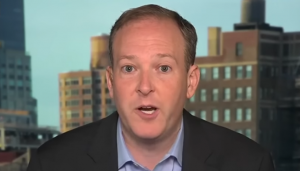Golan Heights, a Syrian territory till 1967, was last year recognised
as a territory of Benjamin Netanyahu-led Israel by the US President, Donald
Trump. To honour and celebrate the 45th US President’s declaration, a
golden-lettered sign with the flags of Israel and America stands before a rusty
wire fence as the gateway to “Trump Heights” in the Israel-occupied Golan
Heights.
Trump Heights, an Israeli settlement, was inaugurated by Prime Minister
Benjamin Netanyahu in June last year after the US President’s declaration. The
Israeli settlement comes under the jurisdiction of the Golan regional council,
whose head Haim Rokacj says, “Since Trump’s declaration and the decision
to build the place, we see a lot of interest from investors.”
Also Read | QAnon: The conspiracy theory spreading rapidly across the US
Golan Heights was captured by Israel in the Six-Day War of 1967
and Trump’s announcement that the US recognises the strategic military zone of the Netanyahu-led country was the latest in a string of steps away from the global
consensus. The Israeli settlements in the Golan Heights are still regarded as
illegal under international law.
However, Trump’s declaration last year, including his statement
of recognising the conflicted-city of Jerusalem as Israel’s capital, gave
Netanyahu the green light to build “illegal” settlements. While Trump’s
announcement came alongside his backing for normalisation deals with Israel,
the UAE and Bahrain, it was termed as a “stab in the back” by the Palestinians.
The US President changed the dynamics of disputes between Israel, a Jewish
state and the Palestinians.
Also Read | Revisiting US President Donald Trump’s dealings with foreign leaders in his first term
As the US President is seeking re-election, to stay in the White
House for another four years, Trump’s pro-Israel stance has further endeared
him to evangelical Christians, a powerful voting bloc.
While the Trump Heights is a new sign, the settlement is not new
and was founded back in 1991, after the collapse of the Soviet Union (USSR)
when hundreds of thousands of Jewish people emigrated to Israel. The Israel
settlement that currently attracts many residents failed to do so back then.
Also Read | US election: What is the difference between absentee and mail-in voting?
Naming the 29-year-old settlement after Trump has given Israeli
authorities to revive the Jewish community that came in 1991 but struggled to
make ends meet. Just five families out of a group of around 15 families,
remains, many of them elderly, Around 20 families are due to move to the remote
spot by the end of November.
Shai Toni Yeheskel, a local from Golan regional council, said
diggers were recently leveling the land ready for their homes, adding, “For
the first time in almost 30 years they have hope.”
“It’s going to become one of the centres of the
Golan.”
Around 25,000 Israeli settlers live in the Golan Heights, along
with some 23,000 Druze, who remained on the land after it was seized in 1967. The
numbers of settlers are far greater in the occupied West Bank, where around
450,000 Israelis live in settlements, alongside over 2.8 million Palestinians.
The approval of settlement-building, which has been an Israeli
policy for decades, was slowed during the tenure of former US President Barack
Obama, but Trump reversed the trend. The number of settlement homes approved
nearly doubled in the first three years of Trump’s presidency, compared to the
last three years of Obama’s leadership, according to Peace Now, an Israeli anti-settlement
organisation. The organisation says that Israel approved the
construction of over 20,000 homes in the West Bank in 2020, a record high for
Jewish building in occupied Palestinian territory.
“Settlement building really does coincide with Trump,”
said Brian Reeves from Peace Now. He adds that repercussions will be felt over
the next years, even if Trump is not re-elected.
“Trump has done irreparable damage to the entire
international consensus on… how you can get to peace,” Reeves said.
Over Trump pro-Israel stance, the Palestinians have cut ties
with his administration, rejecting a US initiative published in January which
included plans for Israel to annex swathes of the West Bank.






